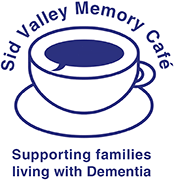Reminiscence has tremendous therapeutic benefits – whether you have memory problems or not.
Talking about our past lives, hobbies and relationships has a positive effect on our self-esteem and our sense of feeling ‘valued’ as an individual person. For someone living with dementia, reminiscing is a golden opportunity to trigger fond memories, creating ‘moments in time’ of contentment and happiness. If you have memory problems, it is important to ‘use’ the past as a way to make sense of the present. For someone living with dementia, whereas they may not be able to remember what they ate for lunch, they will be able to recall details about their childhood. It is important, therefore, to make a conscious effort to reminisce. You could do this by:
- Writing a short autobiography about your life (or if you are supporting someone with memory problems, about the life of the person you care for);
- Creating a Memory Book, using old photos, captions and stories. You don’t have to include everything – just focus on the things that are most important. Remember that every time a story is retold, you are laying it down again in their memory;
- Making a Memory Box. This can be a decorated shoe box, incorporating some tactile materials. You might include things like items of jewellery, items of clothing or a ‘prop’ relating to their favourite hobby or first job;
- Design a Life Story Board, using old photos of the family, schools days, holidays – and a map showing where you / the person you care for has lived. You might also include pictures of the things that they don’t like. This can be very useful when moving to a care home and it will provide ‘conversation starters’ for people who visit and don’t know what to talk about;
- Embrace modern technology as a medium for capturing memories. The wonderful thing about ‘uploading’ clips / mini movies of favourite hobbies, interests and pastimes is that you can engage all the senses. For example, how much more impact does a clip of an old steam train have – and hearing it leave a station – than just looking at a photograph of one? Saving memories to an iPad or computer is also a fantastic way to involve the grandchildren;
- You can also collate your own memory ‘props’ from around the home or by picking things up in charity shops or car boot sales. You could create themed ‘memory’ boxes, such as one on holidays. This might include things like an old knitted swimming costume, old postcards and bus tickets, family holiday snaps and a Punch and Judy puppet. Alternatively, you could put a random selection of items into a box or basket and randomly pick out different items to trigger different memories. This is akin to the ‘Lucky Dip’, which you will remember from the past.
- Remember that the aim of reminiscing is to focus on the things that the person with memory problems still can do and create an opportunity to recall, reminisce, relax and enjoy.
For more information on reminiscence, see www.think-life.org.uk.
